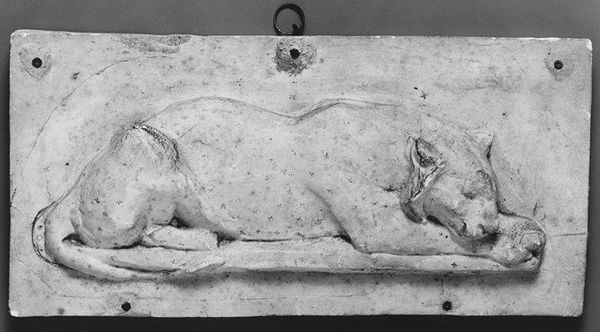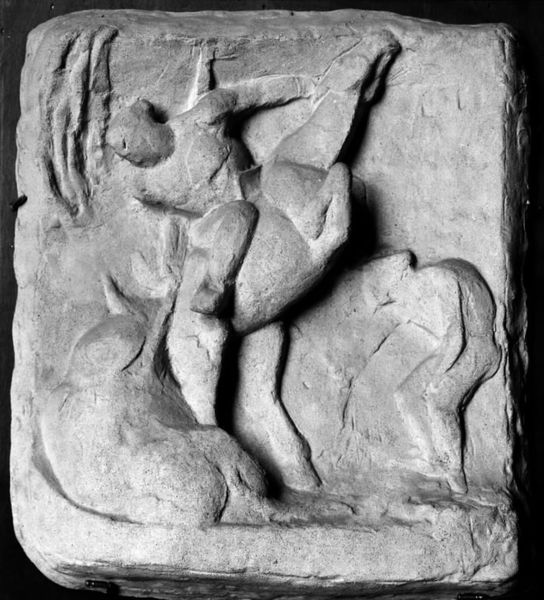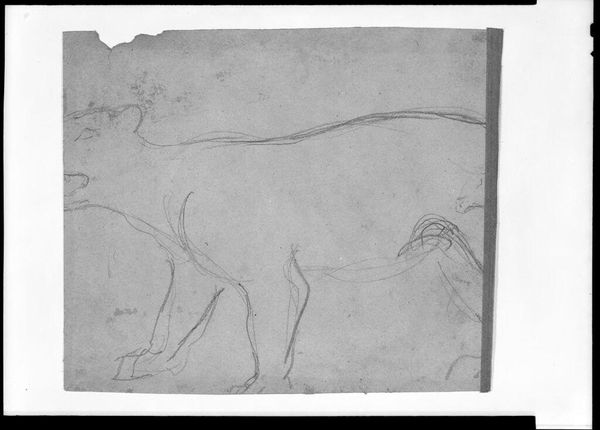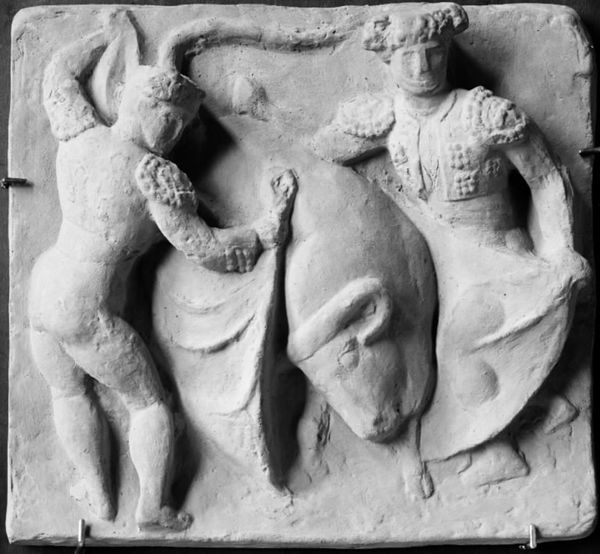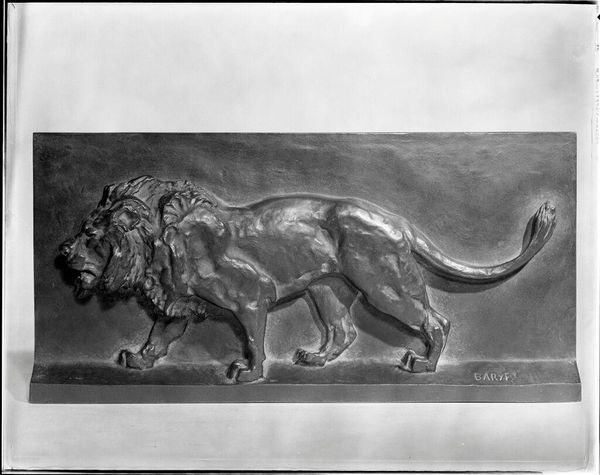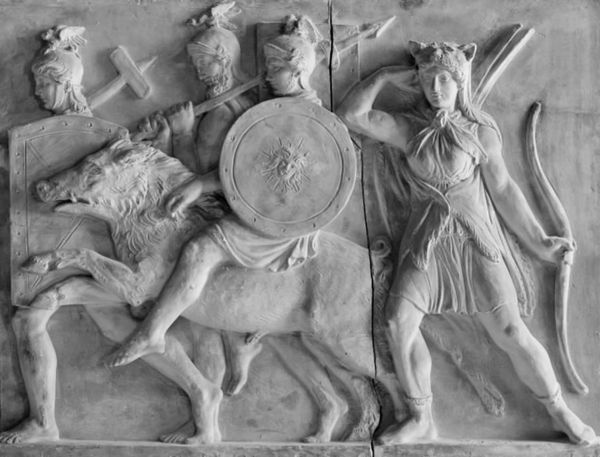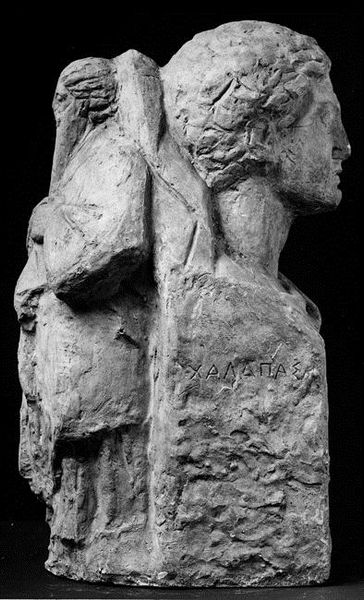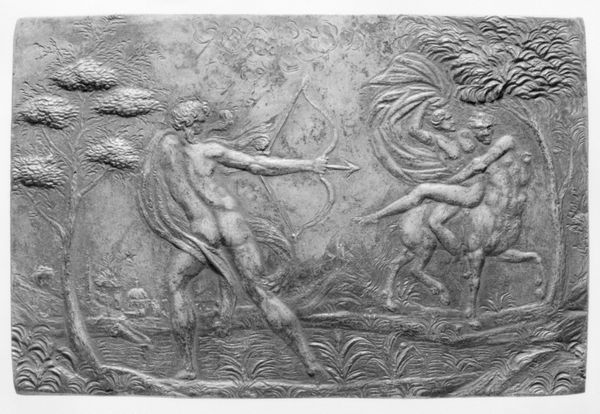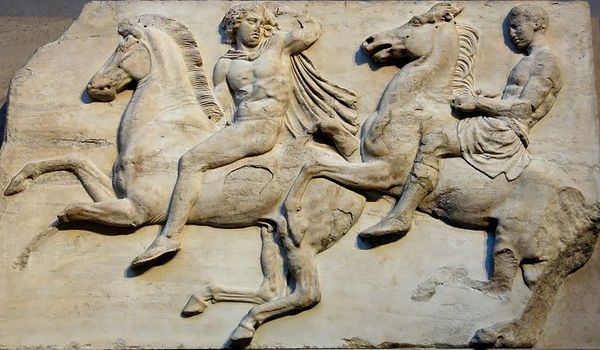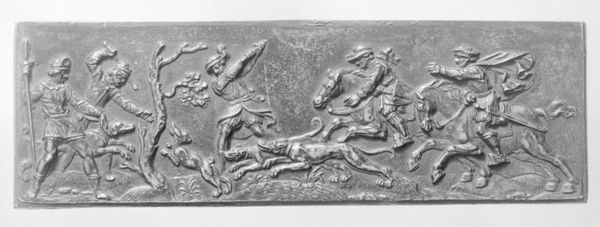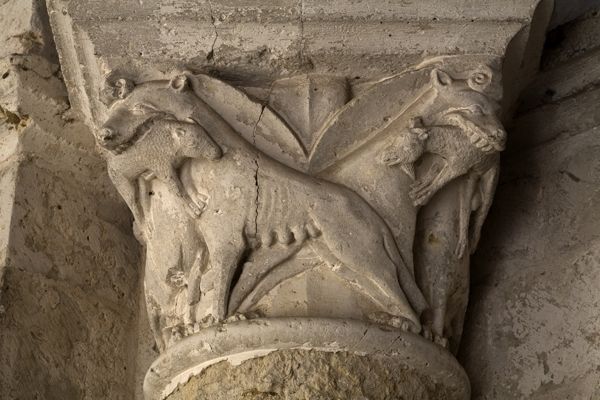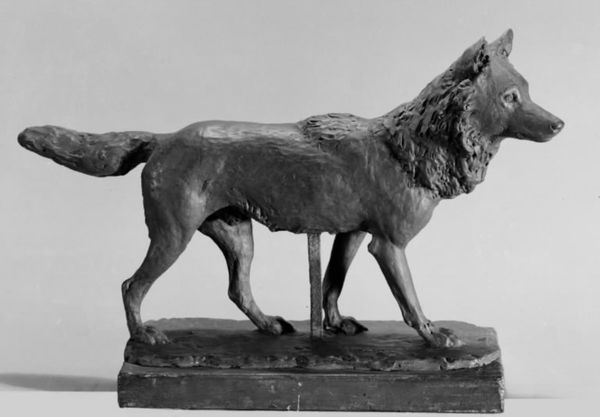
relief, sculpture, plaster
#
animal
#
sculpture
#
relief
#
classical-realism
#
figuration
#
form
#
sculpture
#
plaster
#
academic-art
Dimensions: 18.2 cm (height) x 25 cm (width) x 5 cm (depth) (Netto)
Editor: Here we have Hermann Ernst Freund's 1837 plaster relief, "Standing Ox, Symbol of the Evangelist Luke." I’m struck by the confident stillness of the ox – almost regal despite being, well, an ox. What’s your take on this, viewed through a historical lens? Curator: That confidence, I think, stems from the powerful way animals were used symbolically in the 19th century. Here, the ox signifies Saint Luke, a culturally recognized visual shorthand immediately understood by its audience. But the ox itself has a longer history. Consider its pre-Christian role as a sacrificial animal, imbued with symbolic weight. Freund, by placing it in the context of religious art, navigates that fine line between pagan roots and Christian iconography. How do you see that tension reflected in the work itself? Editor: I guess I hadn't thought of the pagan roots... I was seeing it more as a symbol *of* Luke, period. Looking closer, though, that weightiness – is it something deliberately imbued by Freund or a carryover from the medium of relief? Curator: It's likely both. Relief, especially in plaster as we see here, harkens back to classical sculpture. This ties it to established notions of historical significance and permanence, things an artist during Freund’s time would be well aware of, and perhaps eager to associate with their own work. Did the artist simply select plaster because it's accessible or use this as an opportunity to imbue additional meaning? These are relevant, even if unanswerable, questions we must explore when approaching the piece as historians. Editor: That connection to classical sculpture really clarifies things. I initially saw just an ox; now I see how the museum and historical context contribute to our reading. Thank you! Curator: My pleasure. It reminds us to examine not just *what* an artwork depicts but *how* its historical and cultural placement shapes its message.
Comments
No comments
Be the first to comment and join the conversation on the ultimate creative platform.
